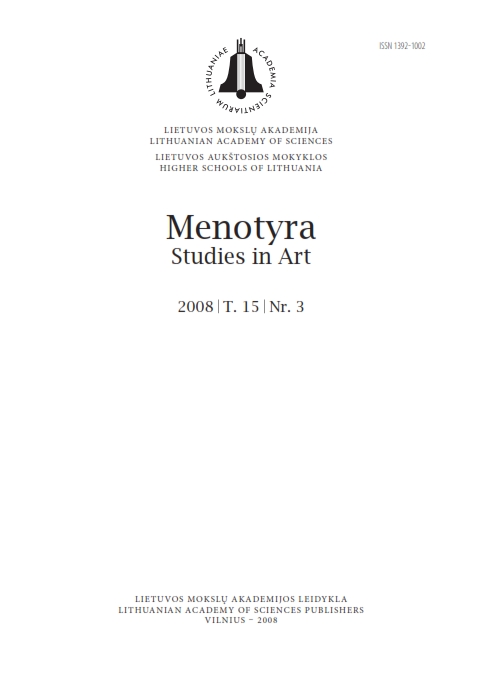Šv. Kazimiero ikonografija ir bažnytiniai kalendoriai Nacionalinės bibliotekos rinkiniuose Paryžiuje
St. Casimir iconography and church calendars in the collections of the National Library in Paris
Author(s): Sigita MaslauskaitėSubject(s): Christian Theology and Religion, Library and Information Science, Visual Arts, Modern Age
Published by: Lietuvos mokslų akademijos leidykla
Summary/Abstract: This summary presents the images of St. Casimir preserved at the Département des estampes et Photographie, the National Library in Paris. The library contains abundant material on the subject of St. Casimir iconography. The church calendars that mention and depict the Saint Prince on March 4, have been selected for the article. The images of the collections of this library show that the worship tradition of St. Casimir in that country was fostered actively by the Society of Jesus. The church calendars emphasize that St. Casimir should be addressed while praying for France, “for the king and the royal home”, as well as “for the dead French”. “The holy pictures” were included in calendars or church books, distributed to the faithful as practical means of devotion, and were published in the documents certifying Baptism, the first Eucharist, and Confirmation. In published graphic works of the 17th–18th century France, St. Casimir often assumes iconographic features of St. Louis, whereas late in the 18th – early 19th century three iconographic types of Price Casimir take form: 1) that of St. Louis; 2) that of a Sarmatian nobleman; and 3) that of any saint, adding an inscription S. Casimir in the picture. Although at that time the “canon” of the Prince of Poland and the Great Duchy of Lithuania was already familiar in France, the French preferred the iconography of St. Louis – the ruler with an open crenellated crown and the relics of the thorny crown and a nail of Christ. The most popular prototype of the images of both St. Casimir and St. Louis is the painting of St. Louis in the titular altar of the Jesuit St. Paul’s Church in Paris. The painting depicts a bareheaded king in deep prayer, kneeling down in front of the Crucified. Such a concentrated devotion of the king surprises even the dwellers of heaven. The picture corresponded both to the hagiographic tradition of the two saints and the ideal of the holy ruler. The “Sarmatian” or “nobleman” St. Casimir must have emerged in the French environment as an exotic, clearly outstanding iconography of a “foreign saint.” The things that symbolized “the apology of the noble democracy system” in our regions were most probably treated as the iconography of a “Slavonic saint” in other countries. The third iconographic type, when a Dominican, Jesuit or any other saint becomes St. Casimir, first of all raises the question: why does this happen? The answer could be very simple: the self-consciousness of the Modern Age, i. e. the most important thing is the quantity and cheapness of pictures; thus, without any further consideration on “who” and “how,” the order of an undemanding client is performed. This statement could be proven by the artistic and print quality of graphic works. At the beginning of the 19th century, the Nancy Publishing House of François Desfeuilles stands out for its abundant production of wood engravings, among which there are numerous images of St. Casimir.The images of St. Casimir from the archives of the National Library in Paris testify to the vitality of the worship tradition of this saint, which manifested itself in different forms at various times in France. St. Casimir is presented as the patron of France, the protector of Catholic countries, and the warrior of chastity.
Journal: Menotyra
- Issue Year: 15/2008
- Issue No: 3
- Page Range: 23-31
- Page Count: 9
- Language: Lithuanian

